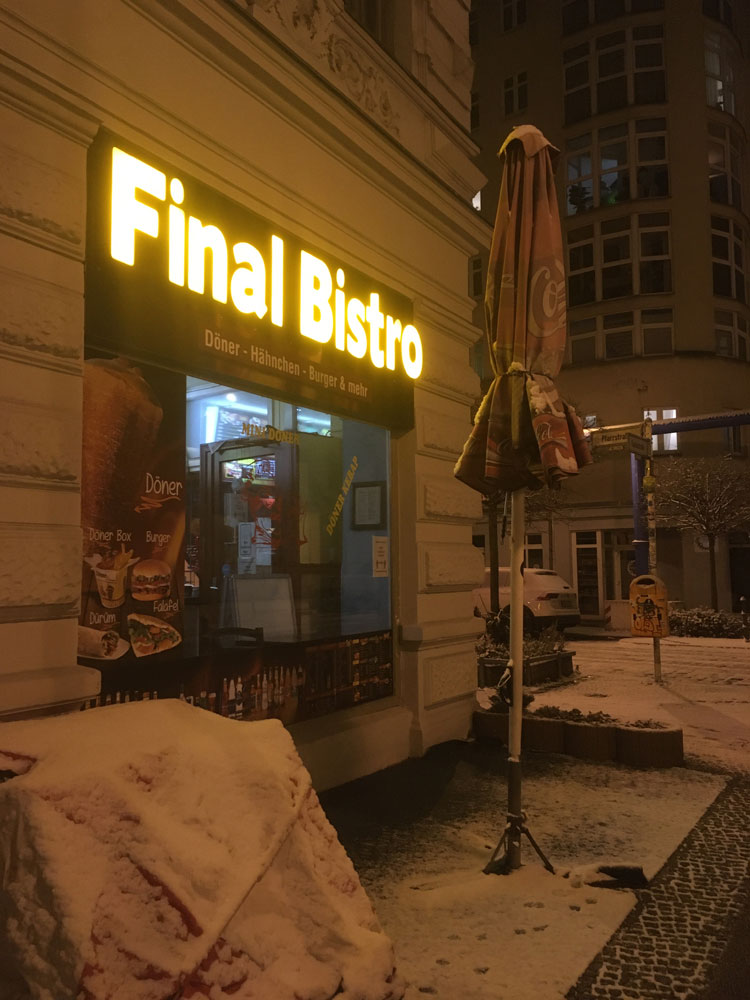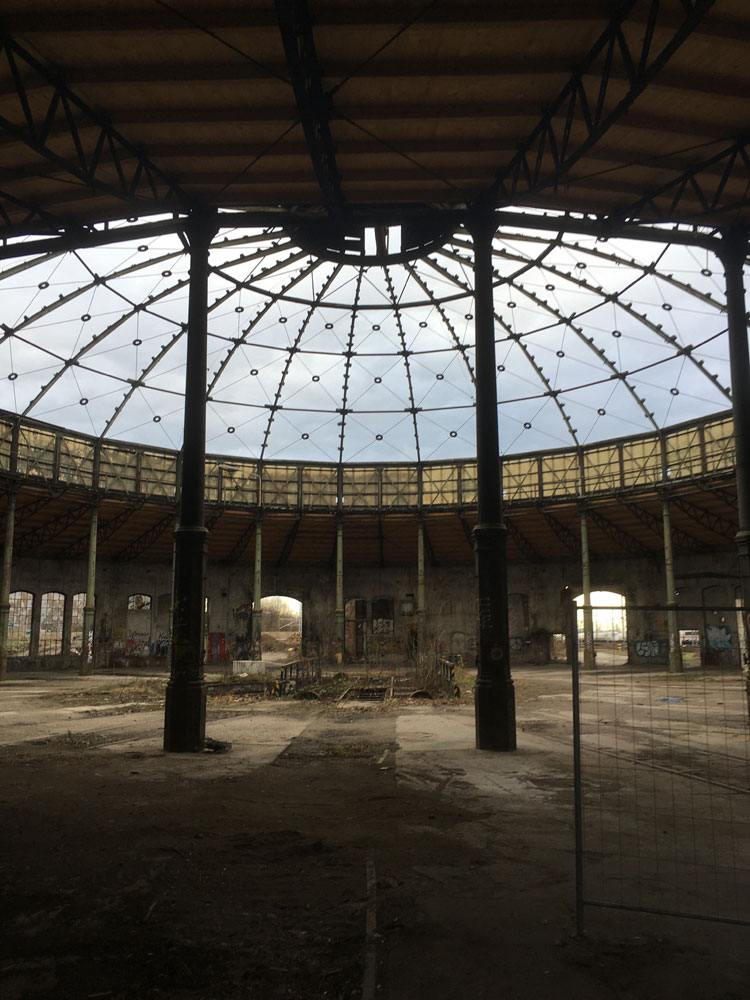
Arrival
The inviting neighbourliness of a mixed forest of concrete, brick and wasteland, which I had previously dismissed as not all that lively, surprises me and forces me to take a very close, yet wide, look from the first moment.
The neighbour standing opposite me in white fine ribs at the window, smoking, seems to nod at me affirmatively and flicks the cigarette down casually.

the round engine shed
This place exerts an incredible attraction on me far beyond my stay.
Designed by Johann Wilhelm Schwedler, built around 1900, it still stands there today in all its beauty and splendour, unimpressed by wind, weather and time.
The roof, which is now completely covered, reminds me of a spider by Louise Bourgeois, which stands protectively over me.
I can already see in my mind’s eye the conversion of the building in Rummelsburg, with half flats and half studios with the overgrown turntable as a garden in the middle. The perfect combination of urbanity and wilderness, and in the middle of the city.
Deutsche Bahn, however, is not quite so euphoric about my plans. They would prefer to demolish the entire facility with the adjacent factory building in its most beautiful brick construction, but this fails due to the – truly unspeakable – protection of historical monuments.
This historic locomotive shed is one of the last two still standing in Germany – the second, also in Berlin, is now the property of the furniture magnate Kurt Krieger and thus also dedicated to certain decay.
It’s good to feel a tender awakening of rebellion again after a long period of mental hibernation.
Soon enough, I will hijack the Rotunda.
the cemetery
Place of reverence, of rest.
The colourful watering can tree evokes memories of the recently worn-out Christmas; but closer inspection makes them fizzle out again in a split second. The smart 1-€uro shop articles are in turn married to other 1-€uro shop articles, at least in an apparently inseparable way.
Colourful locks wrap themselves like banderoles around the steel frame and the watering can handles, creating an image that clearly stands out from an ambience otherwise kept in the most diverse shades of green.
Somehow it seems absurd to me to fill one of these plastic containers in order to pour water over someone who used to be close to me.
And even more absurd, because it is simply unbelievably German: everyone uses their own watering can, which is connected for fear of theft.
In case one day all the surviving relatives wanted to come and water their ancestors at the same time.

the housing estate
It rises high, the corners as sharp-edged as coral, the façade in playful roughcast.
Perhaps the most glaring contrast to the bourgeois rotunda; but that is precisely why it is so striking.
Contrary to the cliché, Lichtenberg offers what feels like negligible numbers of these cool, radical expressions of modern urbanism.
Given the surprising abundance of old buildings, abandoned railway facilities, brick buildings, churches and wide open spaces, I am almost a little enamoured of the prevailing pragmatic, Le Corbusier-esque austerity.
People, in fact, I have seen few here. They seem to feel more comfortable inside; not a little understandable, with zero degrees and dreary grey soup overhead.
I decide to install small set pieces, memories, which – like my dreams – are highly abstracted and seem strangely magical, as interventions in public space.
The shackle lock that can be found on many a bridge railing; the striking edge of a house; the carelessly discarded washing machine hose. The combination of round, warm, inviting with that of angular, cool and repellent.
Departure
If I had to describe my stay in Lichtenberg in a few words, all the contrasts offered to me cancelling each other out and thus offering an unbelievably interesting mixture of the most diverse sensory impressions, I would say: I lived in the smallest version of Europe, in the middle of Berlin.
*** Translated with www.DeepL.com/Translator (free version) ***

